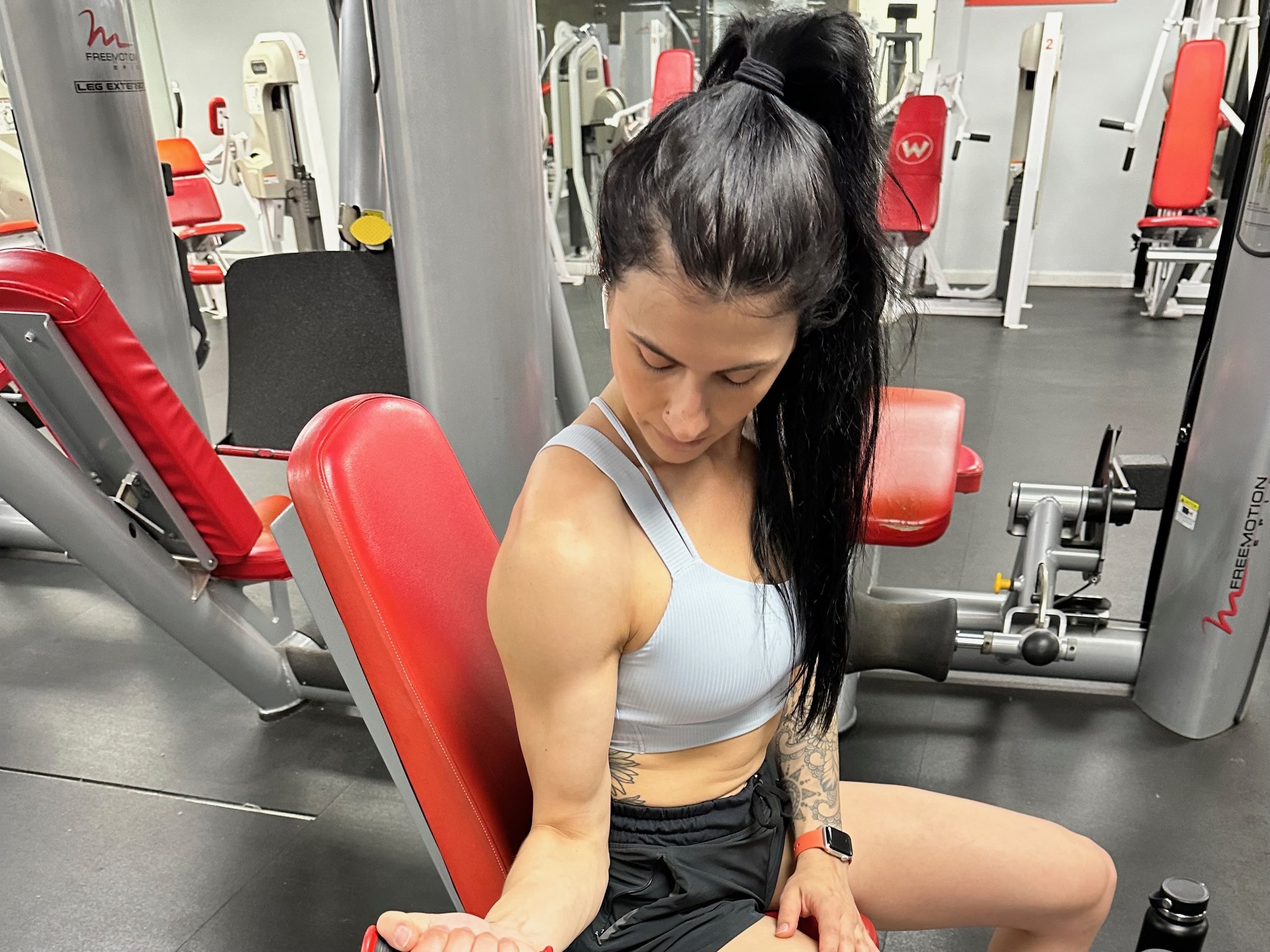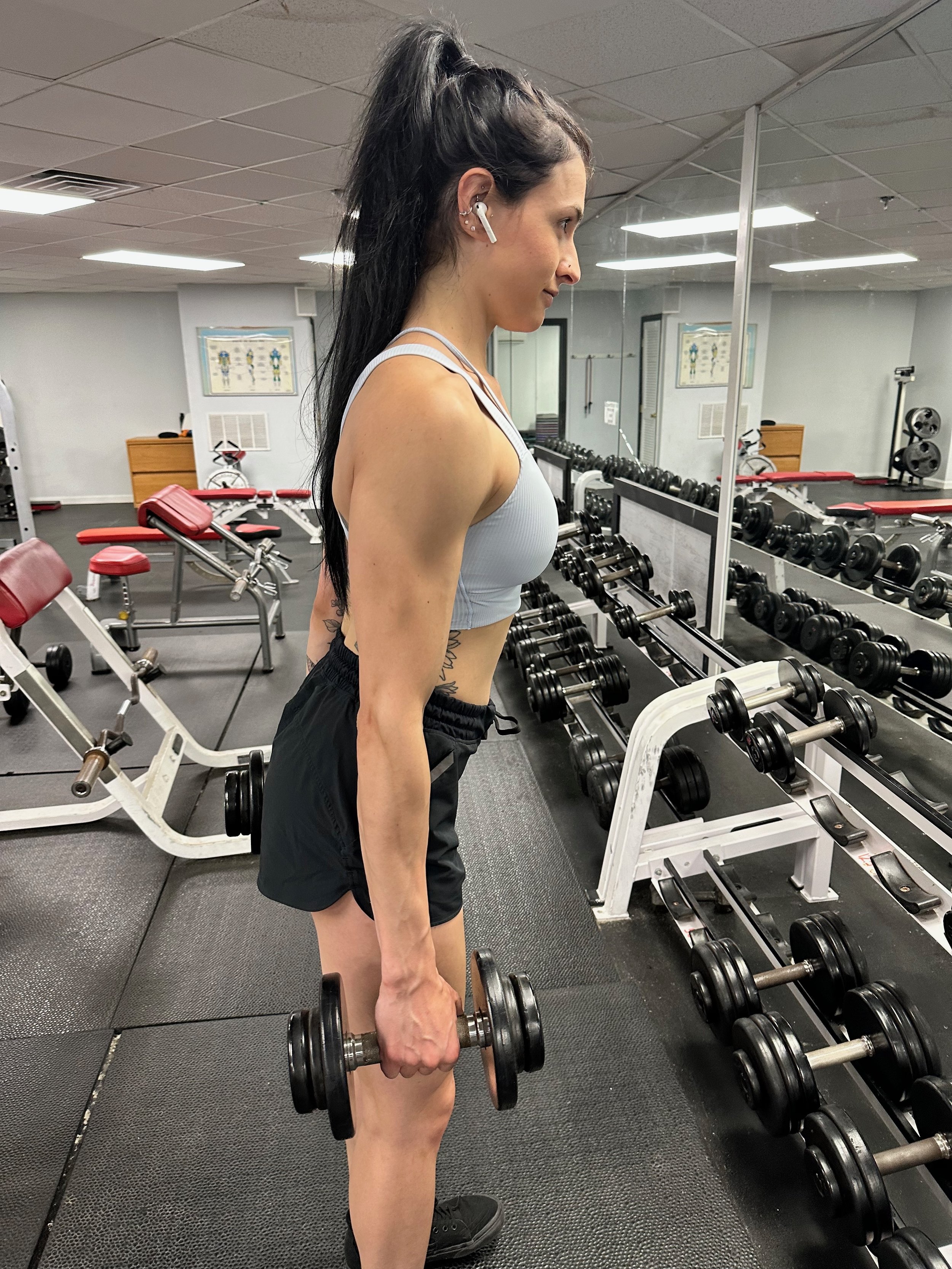Progressive Overload: Why it’s Important, its Benefits, and More
Performing bicep curls at the gym with more weight than the week prior.
Whether your goal is to build muscle or lose weight, change only happens if you continuously progress in your exercises. Many individuals seeking to improve their health usually opt for quick get-in-shape programs, easy workouts, or temporary weight-loss diets. The thing is, the best way to build the body you desire is by following a sustainable nutrition plan and training program that you enjoy and continuously improve in.
When I first started hiking, I climbed the easier mountains. As I continued to hike, I began conquering harder days, such as a single-day Presidential Traverse. By pushing myself out of my comfort zone a little bit more each hike, I improved my cardiovascular endurance, therefore becoming stronger. To see change, you must find the strength to endure greater difficulty every time you perform a specific exercise, whether that’s for hiking, strength training, or running.
Perhaps you’ve heard the quote, “All growth starts at the end of your comfort zone,” by life and business strategist, Tony Robbins. Comfort zones release dopamine, the feel-good hormone. When we put ourselves in situations where we are required to get uncomfortable, we naturally want to fight it. By training ourselves to withstand this feeling, real growth happens.
Glute Growth
Using the progressive overload method of training for hip thrusts increased the amount of muscle in my glutes.
What is progressive overload?
To see progress, you must progressively overload your workouts. According to the National Academy of Sports Medicine (NASM), progressive overload is a method of training where you slowly increase the difficulty of an exercise. This could be an increase in weight, sets, repetitions, or intensity. This method slowly overloads your muscles, which leads to muscle growth.
By pushing yourself at a comfortable rate, you’ll begin to see the changes in your body and mindset that you desire. The principle of progression states that you should only increase difficulty at a rate of 10% per week. This decreases your risk of injury, as it allows your body to adjust to greater intensity at a steady rate.
Dumbbell Bicep Curls
One of my favorite exercises to progressively overload on arm day.
When I first performed bicep curls, I used a 10-pound dumbbell for each arm. I slowly progressed to more weight over time, such as 12.5’s, then 15’s, then 17.5’s, and now 20’s. It’s important to avoid getting comfortable with the same weight. Once you’re able to do 12 to 15 repetitions with a specific weight, you should increase it. Those focusing on muscular endurance can focus on getting more repetitions, such as 14 to 16 instead of 12 to 15 repetitions, the next time they train. To track your progress, I recommend Gym Hero Pro, which is an app that makes it easy to log your workouts.
Benefits & risks of progressive overload
According to Medical News Today, progressive overload is beneficial because you won’t plateau. Those who don’t focus on progressive overload will eventually plateau, meaning they’ll stop making progress. If you decrease progressions, you may experience muscle atrophy, which is a loss of muscle tissue, mass, and strength. After all of your hard work, it would be disappointing to lose all of those gains!
Like any type of movement where you increase intensity, there is a risk of injury. To prevent hurting yourself during exercise, here are a few tips you can follow:
Use correct form and technique. If you feel like your form is off, it’s best to use light weight until you perform the exercise correctly. If you are unsure about how to do an exercise properly, consult a personal trainer. It is important to push yourself, but not at the risk of injury.
Warm-up and cool down. Spend 5 to 10 minutes both before and after your workout to warm up and cool down. To warm up, you can do dynamic stretches, exercises with lightweight, or a short cardio session. To cool down, you can perform static stretches or decrease intensity to let your heart rate come down.
Recover properly. Rest days are just as important as training days. By getting enough sleep and nutrients, your muscles are able to repair themselves, allowing you to train even harder the next time.
Leg extensions are a great exercise for building muscle in your quadriceps.
Who should do progressive overload?
Although it is assumed that only those wanting to build big muscles should be doing progressive overload, this method of training is beneficial to anyone looking to like a healthier lifestyle. Racers don’t sign up for marathons without building their running stamina first; hikers don’t conquer 30-mile days without starting with short, easy hikes; yogis usually aren’t performing headstands the first time they step into a class; and so on. For those looking to see change, progressive overload is essential.
Diet & nutrition to support progressive overload
To continue progressively overloading your exercises, your nutrition is a key factor. If you start to plateau after making progress, it may be due to your diet. As you get stronger, your body puts on more muscle, meaning you will need to increase your calories to continue maintaining and increasing muscle. Plus, once you begin to build muscle, your body will burn more calories to maintain that muscle. According to Harvard Health Publishing, muscle burns more calories than fat, which also speeds up your metabolism.
Working with a coach to guide you through your nutrition and training is the best way to determine your caloric and macro needs that will support your goals. Once you determine the proper amount of macros for your goals, a knowledgeable coach will know how to adjust your diet as you begin making progress. For example, if I begin to plateau and notice more hunger (due to my metabolism speeding up), my coach will increase my carbs. Otherwise, I wouldn’t be able to keep making progress with my workouts.
If you ever need some words of encouragement, please do not hesitate to contact me! Now get after those goals.




